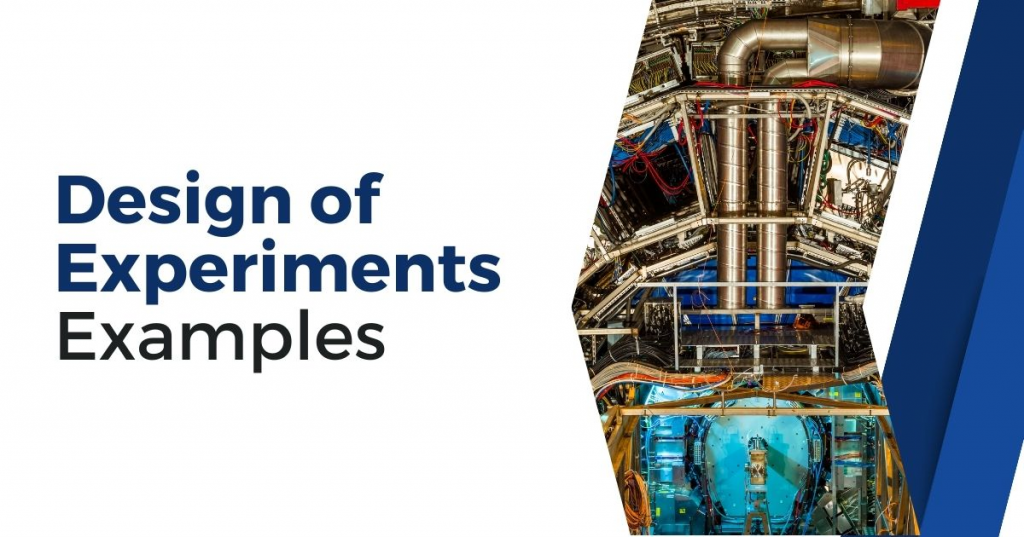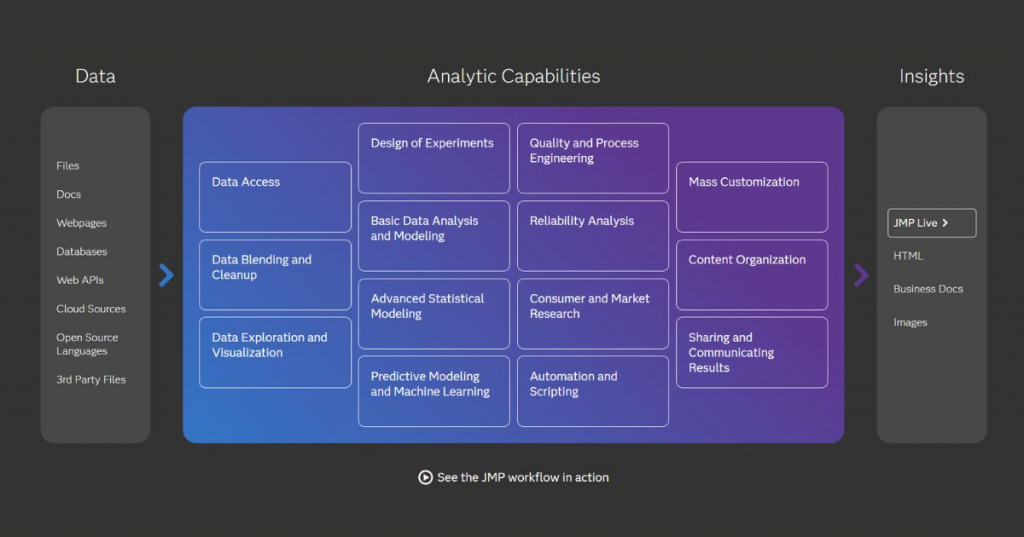Design of Experiments: Definition, How It Works, & Examples
In the world of research, development, and innovation, making informed decisions based on reliable data is crucial. This is where the Design of Experiments (DoE) methodology steps in. DoE provides a structured framework for designing experiments that efficiently identify the factors influencing a process, product, or system.
DoE provides a strong tool to help you accomplish your objectives, whether you work in software development, manufacturing, pharmaceuticals, or any other industry that needs optimization.
This article by SkillTrans will analyze for you a better understanding of DoE through many different contents, including:
What is Design Of Experiments
Design Of Experiments Examples
Design Of Experiments Software
What Is Doe In Problem Solving
And What Is Doe In Testing
First of all, let's learn the definition of DoE.
What is Design of Experiments?

According to Wikipedia, DoE is defined as follows:
“The design of experiments (DOE or DOX), also known as experiment design or experimental design, is the design of any task that aims to describe and explain the variation of information under conditions that are hypothesized to reflect the variation. The term is generally associated with experiments in which the design introduces conditions that directly affect the variation, but may also refer to the design of quasi-experiments, in which natural conditions that influence the variation are selected for observation.”
To put it more simply, Design of Experiments (DoE) is a powerful statistical methodology that revolutionizes the way we conduct experiments and gain insights. At its core, DoE is a systematic and efficient approach to experimentation, allowing researchers, engineers, and scientists to study the relationship between multiple input variables (factors) and key output variables (responses).
Why DoE is Superior to Traditional Testing
Traditional testing methods often rely on a "one-factor-at-a-time" (OFAT) approach, where only one factor is changed while holding others constant.
This method has several limitations:
Time-Consuming: Testing each factor individually can be incredibly slow, especially when dealing with numerous variables.
Misses Interactions: OFAT fails to capture how factors might interact with each other, leading to incomplete or even misleading results.
Inefficient: It often requires a large number of experiments to gain a comprehensive understanding of a system.
How DoE Works
DoE takes a different approach by carefully planning experiments where multiple factors are varied simultaneously according to a predetermined design. This allows for the investigation of both the individual effects of each factor (main effects) and the combined effects of multiple factors (interaction effects).
By doing so, DoE provides a more holistic and accurate picture of the system being studied.
Statistical Power of DoE
DoE uses statistical analysis to interpret experiment outcomes. DoE can quantify the impact of the major factors influencing the response, identify the best settings or conditions, and identify the components that influence the response by using a variety of statistical models.
Benefits of DoE
Reduced Costs: DoE often requires fewer experimental runs than OFAT, saving time and resources.
Improved Understanding: DoE provides a deeper understanding of complex systems by uncovering interactions between factors.
Robust Solutions: DoE helps identify solutions that are more robust to variations in factors, leading to greater reliability.
Faster Optimization: By simultaneously exploring a wider range of conditions, DoE can accelerate the optimization process.
Applications for DoE can be found in many different areas, such as software development, marketing, manufacturing, medicines, and agriculture. It is a priceless tool for innovation and advancement in a variety of sectors due to its capacity to quickly and effectively address complicated difficulties.
We will learn more about the areas where DoE is commonly used in the next section.
Design of Experiments Examples

DoE has a proven track record of solving complex problems and driving innovation across a wide range of sectors. Here are some examples:
Design of Experiments Examples in Manufacturing
DoE is used to optimize manufacturing processes like casting, molding, machining, and assembly. It helps identify optimal settings for temperature, pressure, cycle time, and other variables, leading to improved quality, reduced scrap, and lower costs.
Design of Experiments Examples in Pharmaceuticals
DoE plays a crucial role in drug development, helping to determine optimal dosages, identify the most effective combinations of ingredients, and optimize manufacturing processes for quality and consistency.
Design of Experiments Examples in Agriculture
DoE is widely used in agriculture to optimize crop yields, improve soil fertility, and develop more sustainable farming practices. It helps researchers understand the complex interactions between environmental factors, plant genetics, and farming techniques.
Design of Experiments Examples in Software Development
DoE is applied in software testing to optimize test coverage, prioritize test cases, and identify software vulnerabilities. It also helps developers understand how different code changes impact performance and reliability.
Design of Experiments Examples in Marketing
DoE is utilized in marketing to optimize pricing strategies, advertising campaigns, and product launches. It helps marketers understand how different factors influence consumer behavior, allowing them to tailor their strategies for maximum impact.
These examples are just a glimpse into the vast potential of DoE. To better understand DoE's contribution to different fields, let's take a look at DoE in more detail.
Design of Experiments Software
While the principles of DoE are rooted in statistics and experimental design, the emergence of sophisticated software tools has democratized the methodology, making it accessible to a wider audience. These tools simplify the entire DoE workflow, from initial planning to final analysis, empowering users to design, execute, and interpret experiments with confidence.
Key Features and Benefits of DoE Software
Experiment Design
DoE software helps users choose the best experimental design depending on their objectives, considerations, and available resources. It facilitates the creation of effective experimental plans, randomization of runs, and design matrices.
Statistical Modeling
The statistical models that explain the connection between variables and responses are automatically created by the software. Response surface models, analysis of variance (ANOVA), and linear regression are among the models it can fit.
Data Analysis
DoE software offers strong analytical capabilities for data analysis, such as effect estimation, model diagnostics, and hypothesis testing. It assists users in locating important variables, estimating their influence, and choosing the best configurations.
Optimization
Optimization algorithms are a common feature of DoE software packages, which assist users in determining the combination of factor values that maximizes or minimizes a desired result.
Visualization
To assist users in efficiently interpreting and communicating their findings, DoE software provides a variety of visualization tools, including Pareto charts, interaction plots, and response surface plots.
Popular DoE Software Options
Here are a few well-known DoE software you might want to look into:
JMP

JMP is a feature-rich statistical software package with strong DoE capabilities that was developed by SAS. It provides a large selection of designs, sophisticated statistical modeling capabilities, and an intuitive user interface.
Minitab
A well-liked statistics program with plenty of DoE tools and an intuitive user interface is Minitab. It provides a wide range of designs, simple analysis tools, and lucid visualizations.
Design-Expert
Specialized DoE software called Design-Expert concentrates on response surface methodology (RSM). It offers an easy-to-use interface for creating, evaluating, and refining complicated interaction experiments.
Stat-Ease 360
Stat-Ease 360, a more comprehensive version of Design-Expert, interfaces with Python to enable custom scripting and sophisticated analysis.
Other Options
There are numerous other DoE software options available, each with its own strengths and target audience. Some examples include Cornerstone, MODDE, and Unscrambler.
The intricacy of the trials, financial limitations, features that are wanted, and the user's degree of statistical competence all influence the choice of DoE software. In order to provide consumers the opportunity to test out the features and functioning before deciding to buy, many software companies offer free trials.
DoE in Problem Solving

Identifying effective solutions and determining the underlying causes of complex problems can be challenging due to the presence of various interacting components. Design of Experiments (DoE) provides a methodical, data-driven approach to resolving these issues and making wise choices.
Here's a closer look at the DoE problem-solving process:
Define the Problem with Metrics
The first step in using metrics and Design of Experiments to effectively address a problem is to precisely define the pertinent, quantifiable problem. For example, state the challenge as "reduce defect rate by 20% within six months" rather than aiming for something as abstract as "improve product quality."
For the purpose of problem-solving, clearly define your aims and objectives and what you want to accomplish through experimenting.
Furthermore, ascertain which important parties will be impacted by the issue and its resolution, and make sure that their requirements and viewpoints are taken into account at every stage of the process.
Identify Factors with Potential Impact
Start by thinking and making a list of every potential input variable that can have an impact on the result or response variable in order to uncover elements that could have an impact. These variables may include uncontrollable ones like raw material variability or ambient circumstances, as well as controllable ones like temperature, pressure, or ingredient proportions.
After you have a complete list, rank the elements according to how they might affect the answer. You can determine the relative relevance of each item by utilizing previous information, professional judgment, or preliminary evidence.
Furthermore, take into account how different elements interact with one another, as some may have an effect that is different from each of them alone.
Design the Experiment with Statistical Rigor
The first step in creating an experiment with statistical rigor is choosing an acceptable experimental design that takes into account the number of variables, the desired level of detail, and the resources that are available. Response surface designs, factorial designs, and fractional factorial designs are examples of common designs.
Subsequently, ascertain the necessary number of experimental runs to attain statistically significant outcomes, taking into account variables like the intended confidence level, response variability, and the target effect size.
In order to reduce the influence of uncontrollable circumstances and maximize the reliability and objectivity of the results, finally arrange the experimental runs in a random sequence.
Analyze the Results with Statistical Tools
In order to use statistical tools to analyze the outcomes, first gather data from the experiments and analyze it with applicable procedures like regression analysis, analysis of variance (ANOVA), or other pertinent statistical approaches.
Determine which statistically significant variables actually affect the response. Calculate the ideal settings for each significant element by quantifying its effect size.
To ensure a thorough grasp of how various variables affect the result, evaluate the interactions between components and ascertain their impact on the response.
Implement Solutions with Data-Driven Confidence
Start by creating workable solutions based on the findings of your study in order to execute solutions with confidence that is informed by evidence. These fixes could include updating designs, introducing new tactics, altering formulas, and adjusting process settings.
To make sure the solutions are effective, validate them with more trials or pilot studies. After the solutions are put into place, keep an eye on them and evaluate their effects over time. Use the information gathered to make any necessary additional improvements or modifications.
DoE in Testing

The field of testing has seen a revolution in the evaluation and optimization of products and processes thanks to the Design of Experiments (DoE) approach. It offers a methodical and effective way to look into the various ways that variable inputs affect a system's quality, dependability, and performance across a broad spectrum of circumstances.
Why DoE is Essential for Testing
Traditional testing methods often involve changing one factor at a time, which can be time-consuming and may miss critical interactions between factors. DoE, on the other hand, allows testers to simultaneously manipulate multiple factors according to a carefully designed plan.
This enables them to:
Identify Optimal Settings
DoE helps determine the combination of factor settings that yield the best possible results, whether it's maximizing a desired output (e.g., yield, efficiency) or minimizing an undesirable one (e.g., defects, variability).
Reduce Variability
DoE can assist in identifying methods to lessen or regulate system performance variability by understanding the various elements that contribute to this variability and how to achieve more consistent and predictable results.
Enhance Robustness
DoE can identify solutions that are robust to variations in factors, ensuring that the product or process performs well even under different operating conditions or with varying inputs.
Accelerate Testing
DoE can save time and money by strategically choosing experimental runs and evaluating the collected data, which can lower the number of experiments needed to produce trustworthy results.
Gain Deeper Insights
DoE provides a deeper knowledge of the behavior of the system by revealing intricate interconnections between components, going beyond just identifying key ones.
Examples of DoE in Testing
Here are a few examples of DoE in testing that you might find useful:
Software Testing
DoE is used to optimize software performance, identify bugs and vulnerabilities, and ensure compatibility across different platforms and configurations. For example, a software company might use DoE to test the impact of different hardware configurations, network conditions, and user behaviors on the performance of their application.
Product Testing
DoE is employed to evaluate the performance and reliability of products under various conditions, such as temperature, humidity, vibration, and stress. This helps manufacturers identify design weaknesses, improve product robustness, and ensure compliance with quality standards. For instance, an electronics company might use DoE to test the durability of their smartphones under extreme temperatures and humidity levels.
Process Testing
DoE is applied to optimize manufacturing processes, improve yield, reduce defects, and enhance overall efficiency. For example, a chemical company might use DoE to optimize the reaction conditions for a chemical synthesis process, such as temperature, pressure, and reactant concentrations.
Medical Device Testing
DoE is used to assess the effectiveness and safety of medical devices across a variety of patient groups, usage scenarios, and environmental settings. This ensures that medical gadgets function consistently well in real-world circumstances and satisfy regulatory standards.
Skilltrans brings you expert-recommended courses to deeply understand. Please click on the course name below to learn more:
Master Certified Manager of Quality (CMQ/OE) Essentials
CMQ/OE certification demonstrates a commitment to excellence in quality management and positions professionals as trusted leaders capable of driving positive change and achieving organizational success through quality improvement initiatives.
By the end of this course, you'll emerge as a proficient quality management professional, equipped with the knowledge, skills, and certification preparation to navigate the complexities of modern quality management and drive impactful change within your organization.
Conclusion
A flexible approach, Design of Experiments enables organizations to solve complicated challenges, obtain deeper insights, and make data-driven decisions. You can reach a new level of productivity and creativity in your industry by adopting DoE and making use of the appropriate software solutions.
In search of DoE Courses? From introductory to advanced courses in Design of Experiments, SkillTrans has a lot to offer. Look through our collection to select the ideal training to advance your knowledge!

Meet Hoang Duyen, an experienced SEO Specialist with a proven track record in driving organic growth and boosting online visibility. She has honed her skills in keyword research, on-page optimization, and technical SEO. Her expertise lies in crafting data-driven strategies that not only improve search engine rankings but also deliver tangible results for businesses.



